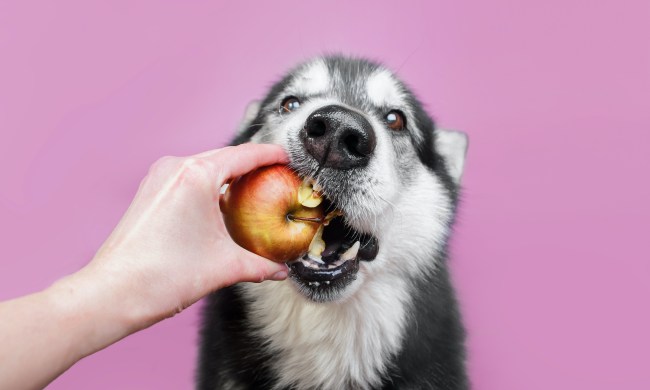
English setters have a refined nickname: “The gentlemen of the dog world.” However, these beautiful pups aren’t haughty in the slightest. They’re known and loved for their laid-back, amiable charm and happy demeanor.
This dog breed has a reputation as a loyal companion. The athleticism of English setters is impressive and opens the door for many fun adventures, like building homemade obstacle courses in the backyard or long walks.
The English setter’s good looks require a bit of maintenance, though. Despite the friendly personalities, this breed may not be the best fit for every family. Considering your lifestyle and preferences before welcoming a dog into your home is essential to ensure the fit is forever. Should you make an English setter your new family pet? Here’s what to know about this handsome breed.
History of English setters
The English setter isn’t an ancient breed, but the pups have been around for about four or five centuries. The English setter is likely a product of breeding between the Spanish pointer, Springer spaniel, and large water spaniel. As you can probably tell from the name, the breed originated in England. The dogs covered different terrains than other setters, like Irish, hence the distinction.
Speaking of names, English setters were bred and trained to “set” during hunts. When a dog sets, they lie down to let the hunter know the game is near. The hunter casts a wide net over the dog and game, usually birds in the English setter’s case. This process preceded the invention of guns. When hunters started using those, English setters took on new roles by standing upright to “point” or alert a hunter to nearby birds.
Edward Laverack of England and R. LL Llewellyn of Wales are primarily credited for developing the modern setter. Laverack developed a show dog, while Llewellyn bred smaller setters to hunt. The English setter arrived on American shores in the 19th century, where C.N. Myers, a breeder with Blue Bar Kennels in Pennsylvania, spearheaded efforts to develop the English setter across the pond.
The English setter was a pioneering breed with the American Kennel Club (AKC), becoming one of the first nine breeds registered with the fledgling organization in 1878.

Your complete guide to the English setter
English setters are a total package, from good looks to charming personalities. Here’s what to know about the breed, from physical traits and health problems to how well they get along with small kids and other pets.
Physical characteristics
To meet AKC breed standards, a purebred English setter must have specific characteristics, including:
Height: 25 to 27 inches (male), 23 to 25 inches (female)
Weight: 65 to 80 pounds (male), 45 to 55 pounds (female)
Coat: Long, silky, and needs frequent grooming. Some acceptable colors include blue belton, lemon belton, and white.
Health issues
English setters have an average life span of 12 years; some will live longer or shorter lives. They’re happy dogs and make for loving, memorable companions. Thinking about a pet getting sick isn’t fun. However, knowing health issues common with breeds can allow you to get your pet care, potentially improving the outcome.
The good news? English setters are a reasonably healthy bunch. Some common health concerns include:
- Cancer, specifically hemangiosarcoma (usually affects body parts with high blood volume, like the heart and spleen) and lymphoma (starts in the lymph system)
- Hip dysplasia
- Epilepsy and seizures
- Allergies
- Hearing problems
- Autoimmune thyroiditis, or a thyroid condition in which the immune system goes after the thyroid gland — dogs with this disease do not always show symptoms
Though you can’t protect your dog from everything — and some issues may be hereditary, such as seizures — you can take steps to keep your English setter healthy, including:
- Attending regular vet checkups, usually once to twice yearly, depending on your setter’s age and health
- Administering monthly preventatives
- Remaining up to date on vaccines
- Feeding your pet a high-quality dog food
- Limiting treats to 10% of daily caloric intake
- Ensuring your English setter gets plenty of exercise
- Keeping up with grooming, including weekly brushing with a soft-bristled brush
- Brushing teeth to ward off dental disease
- Keeping nails clipped
- Cleaning ears regularly, including after baths or swims
- Reaching out to your vet if you notice changes in your dog, such as a decrease in energy or appetite
Social characteristics
English setters are often lauded for their outward appearances. However, the pet proves that what’s on the inside counts, too. In fact, their personalities are what have endeared them to families for centuries. English setters are highly affectionate pets. Though males can weigh up to 80 pounds, they’re keen to give plenty of kisses and possibly attempt to sit in your lap. The breed is often a good fit for various families, including those with small children, cats, and other dogs (usually). The dogs are generally pretty playful and open to strangers. They bark to alert but aren’t “yappy” dogs. This breed is highly intelligent and eager to please. Together, these traits make English setters pretty simple to train. All dogs benefit from training.
Loyal and loving pets with good looks to boot, English setters generally get along with other pets, including cats and small children. They’re also highly adaptable and willing to accept strangers. Though English setters will go with the flow, they are still a responsibility. The dogs need significant grooming to keep their coats in tiptop shape and thrive in homes that can give them the love and exercise they crave. It’s also important to remember every dog is different. Some English setters may not play well with other dogs or small children. It’s best to get insights from a shelter or reputable breeder and ensure all family members (other dogs included) meet any pup you’d like to bring home.



